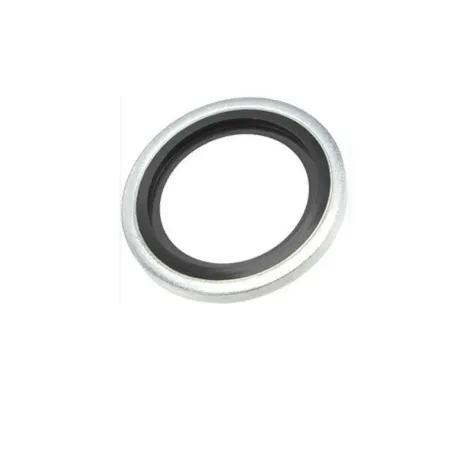Do You Really Need a New Oil Washer Every Time? A Guide to Crush Washers and Oil Drain Plug Seals
When it comes to routine vehicle maintenance, few tasks are as common—and as underestimated—as the oil change. While the spotlight often shines on oil brands and filter quality, one small part plays a crucial sealing role: the oil washer, more commonly known as the crush washer. This tiny component ensures that your engine oil stays where it belongs—inside the engine. But do you really need a new one every time? Can you reuse it? What about rubber washers instead of metal ones? Let’s explore these questions in detail.

What Is an Oil Washer and Why Does It Matter?
The washer for oil change is a small, ring-shaped component designed to sit between the oil drain plug and the oil pan. When the plug is tightened, the washer deforms slightly to form a tight, leak-proof seal. It’s a simple part, but it performs a critical function: preventing oil from leaking out of your engine after an oil change.
There are several types of washers used in oil drain systems:
Metal crush washers: Made of soft materials like aluminum or copper, designed to deform and seal once.
Rubber crush washers: Typically bonded to a metal backing or used alone in some applications, especially with reusable plugs.
Flat washers: Simple, non-deforming washers sometimes used with sealing compounds.
Choosing the correct washer depends on your vehicle make, oil pan material, and whether your drain plug is designed for a reusable or single-use washer.
Reusing Crush Washers: Smart or Risky?
A common question for DIY oil changers is: Can I reuse a crush washer?
In general, reusing a crush washer is not recommended. Here’s why:
Metal crush washers are designed to deform once. When reused, they may not seal properly, increasing the risk of a slow oil leak.
A deformed washer can distort under torque, making it difficult to apply the correct tightness without over-tightening the plug.
Reusing may seem like a way to save money, but the cost of replacing an oil-stained driveway or repairing a stripped oil pan is far higher.
That said, in emergency situations or for vehicles that use flat washers instead of crush types, reusing may be possible—but always inspect carefully. If the washer looks flattened, bent, or damaged in any way, replace it.
Rubber Washers and Alternatives to Traditional Crush Washers
Some vehicles, particularly newer models, come equipped with a rubber crush washer or a rubber washer for oil drain plug. These differ from traditional metal washers in a few key ways:
Rubber washers can often be reused for multiple oil changes, depending on the manufacturer’s recommendation and the washer’s condition.
They provide a more flexible seal and are less prone to damaging aluminum oil pans.
Many aftermarket oil drain plugs come with a bonded rubber/metal washer for enhanced durability and performance.
Rubber washers have their advantages, especially in applications where ease of installation and reusability are desired. However, they’re also more prone to degradation from heat and oil over time. If your washer shows signs of cracking, swelling, or hardening, it’s time to replace it.
Tip: Always check your owner’s manual or service guide to see what type of washer is recommended. Installing the wrong washer can lead to an improper seal or even damage to the oil pan threads.
Tips for a Leak-Free Oil Change
To make your oil change as clean and effective as possible, follow these best practices for dealing with your oil drain plug and washer:
Replace the washer every oil change unless your vehicle specifically uses a reusable rubber type in good condition.
Torque the drain plug properly using a torque wrench—over-tightening can strip threads or crack the washer, while under-tightening can lead to leaks.
Clean the mating surfaces on both the drain plug and the oil pan. Dirt or old oil can compromise the seal.
Keep a few spare washers on hand, especially if you change your own oil frequently. It’s a cheap way to ensure you always have the right part.
Consider a magnetic drain plug with a built-in washer for added protection and easy oil analysis (it attracts metal shavings from the oil).
Whether you’re using a metal oil washer, rubber crush washer, or rubber washer oil drain plug, the key is making sure it’s in good condition and appropriate for your vehicle. Skimping on this $0.50 part could cost you hundreds in repairs if a leak goes unnoticed.
The washer for oil change may be small, but its impact on your vehicle’s performance and longevity is significant. Understanding the difference between a metal crush washer, a rubber washer, and when each can be reused is crucial for proper oil maintenance. Always err on the side of caution—when in doubt, replace it.
-
Seal 12x20x5: Precision Radial Shaft Seals for Industrial Reliability
Nouvèl Nov.24,2025
-
Seal 12x18x5: Essential Guide to Specifications, Applications & Vendors
Nouvèl Nov.24,2025
-
Understanding Seal 12 20 5: Applications, Specifications & Industry Insights
Nouvèl Nov.23,2025
-
Durable Oil Seal 85x110x12 – Reliable Sealing Solutions for Industry
Nouvèl Nov.23,2025
-
Durable and Precise Oil Seal 75x95x10 for Efficient Machinery | YJM Seal
Nouvèl Nov.22,2025
-
Durable Oil Seal 75x100x10 for Reliable Industrial Performance | YJM Seal
Nouvèl Nov.22,2025
-
High-Quality Oil Seal 65x90x10 | Durable & Reliable Sealing Solutions
Nouvèl Nov.22,2025
Kategori pwodwi yo















